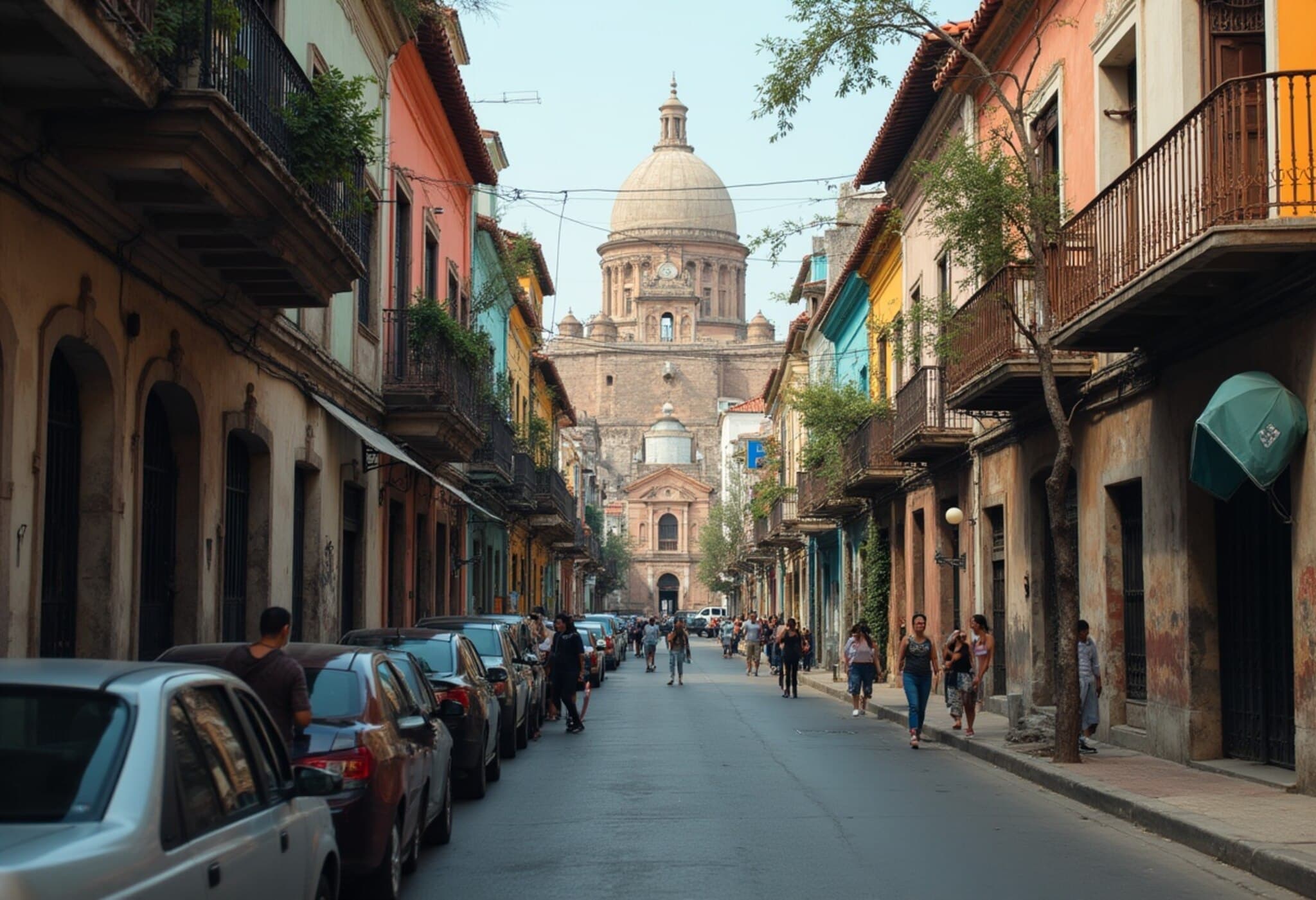Mexico City Faces Backlash Over Rising Rents Driven by Overtourism and Digital Nomads
As Mexico City grapples with the unintended consequences of its burgeoning tourism industry, waves of protests have surged across the metropolis, fueled by local residents alarmed at surging rent prices and the erosion of community fabric. The city administration has responded by unveiling an ambitious 14-point plan aimed at curbing gentrification — a crisis exacerbated by increased demand for short-term rentals and the influx of so-called “digital nomads.”
Protests Ignite Amid Displacement Concerns
Earlier this month, neighborhoods historically inhabited by working-class Mexicans became the epicenter of heated demonstrations. Residents took to the streets to voice frustration over soaring housing costs, many attributing their displacement to international visitors occupying homes once rented by locals. While the majority of protests remained peaceful, some devolved into violence, with isolated incidents of vandalism and confrontations targeting foreigners.
Mexican President Claudia Sheinbaum strongly condemned the xenophobic undertones that emerged during these demonstrations. “We must unequivocally reject any calls for exclusion based on nationality,” Sheinbaum stated, underscoring the importance of addressing gentrification without fueling division or discrimination.
The Roots of the Crisis: Tourism Policies and Digital Nomadism
The origins of this housing conundrum trace back to 2022 when then Mexico City Mayor Sheinbaum brokered an agreement with Airbnb and UNESCO to bolster tourism and appeal to remote workers worldwide. This initiative sought to capitalize on Mexico City’s vibrant culture and affordability, positioning it as a prime destination for digital nomads. However, the expansion of short-term rental platforms inadvertently pushed rental prices upward, squeezing out long-term residents.
Experts emphasize that while tourism advances local economies, unregulated growth can fracture communities. In Mexico City, where housing stock is finite and socioeconomic disparities stark, the rapid transformation has intensified existing inequalities.
The Government’s Strategic Response: A 14-Point Plan to Protect Locals
In a public statement, Mexico City Mayor Clara Brugada acknowledged the urgency of confronting gentrification’s consequences. She promised the implementation of a “transparent, objective, and rigorous methodology” to regulate short-term rentals, aiming to strike a delicate balance between fostering tourism and preserving affordable housing for residents.
- Implement rent control measures to stabilize housing costs
- Develop clear regulations on temporary rentals ensuring community integrity
- Balance landlord and tenant rights to prevent unfair evictions
- Preserve neighborhood identities and cultural roots amidst development
- Enhance monitoring of tourist accommodations to prevent market distortion
Brugada emphasized, “Gentrification is not just a local issue, but a global one that threatens to uproot thousands of families if left unchecked.” Her administration’s approach reflects an emerging trend among global cities to regulate disruptive economic forces while protecting vulnerable populations.
Broader Implications: What Mexico City’s Struggle Reveals
This unfolding story resonates beyond Mexico City’s borders, illustrating the complex challenges that modern urban centers face amid globalization and technological shifts. The rise of digital nomads, enabled by remote work, presents both economic opportunities and social dilemmas.
American cities, too, are witnessing parallel pressures — from skyrocketing rents to debates over short-term rental platforms like Airbnb reshaping neighborhoods. Mexico City’s experience highlights the critical need for proactive, inclusive policies that safeguard long-term residents without stiffling innovation and economic growth.
Editor’s Note
Mexico City’s courageous step to confront gentrification amidst social unrest sheds light on a growing global tension: balancing economic development fueled by tourism and technology with the right of citizens to affordable housing and community continuity. As policymakers worldwide wrestle with similar issues, transparent governance, community engagement, and equitable regulation will be vital to prevent displacement and social fragmentation. The question remains — can Mexico City’s 14-point plan serve as a blueprint for sustainable urban coexistence in an era of rapid change?



















